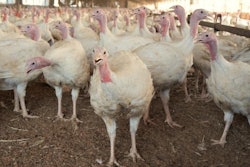
Global egg production has grown steadily over the last decade and reached over 86 million metric tons (mmt) by the end of 2020, a 26% increase from 2010’s 64 mmt production level, according to the Food and Agricultural Organization (FAO) (Figure 1).
The world’s largest egg producer China produced over 30 mmt of eggs in 2020, followed by the U.S. at 6.6 mmt and India at 6.3 mmt, according to the FAO’s most recent data (Figure 2).
China has been the world’s largest egg producer for the last 30 years due to its strong economic growth, improved supply chains and favorable prices, according to a study published in the World Poultry Science Journal in 2018.
India is expected to see significant growth in egg production, as egg prices in India hit record highs in 2020 and per capita egg consumption is expected to double within the next five years.
The U.S. continues to remain one of the largest egg producing countries and has increased its production level by 11% over the last 9 years, reaching 9.2 million dozen eggs in 2021, according to data from the U.S. Department of Agriculture (USDA) (Figure 3).
The USDA estimates that the U.S. will produce over 9.5 million dozen eggs in 2022 (Table 1), a 3% increase from 2021. However, the USDA’s National Agricultural Statistics Service data shows that the number of layer hens in the country totaled 327 million at the end of 2021 and 302 million in August of 2022 (Figure 4). The 8% reduction in 2022 is due to the country’s highly pathogenic avian influenza (HPAI) outbreak.
Egg production type
Globally, it is estimated that 84.2% of layer hens are housed in caged systems, while 12.4% are housed in indoor cage-free systems and 3.4% have access to the outdoors. In the European Union (E.U.), almost 45% of its laying hens are housed in enriched cages, according to the European Commission (Figure 5). The region’s egg production levels are expected to reach almost 7 mmt in 2031 (Figure 6), a 4.5% increase from 2022’s projection.
In June 2021, the European Commission published a proposal stating its commitment to prohibiting caged farming. By the end of 2023, the commission will deliver a legislative proposal to completely phase out cages and ban the practice completely by 2027.
In the U.S., layer housing legislation and customer pledges are pushing the country’s egg industry towards more cage-free conversions. By the end of 2026, ten U.S. states will have housing mandates in effect, including Nevada, Oregon, Washington, Colorado, Michigan, Utah, Rhode Island and Arizona. In California and Massachusetts, cage-free housing mandates are already in effect. After the ten states’ mandates take effect, almost 25% of the U.S population wil be living in a state with a housing law.
The September 2022 USDA Cage-Free Shell Egg Report estimates that 34.8% of all U.S. table egg laying hens were housed cage free in August of 2022.
U.S. cage-free state mandates as of April 2022
Percentage of U.S. population residing in states with cage-free mandates
Egg production in the Netherlands 2015-19
Egg production in Malaysia 2015-19
Egg production in Italy 2015-19
Egg production in Germany 2015-19


















